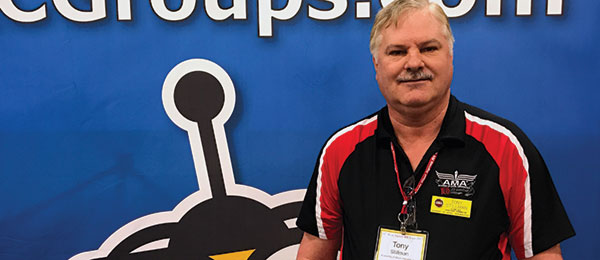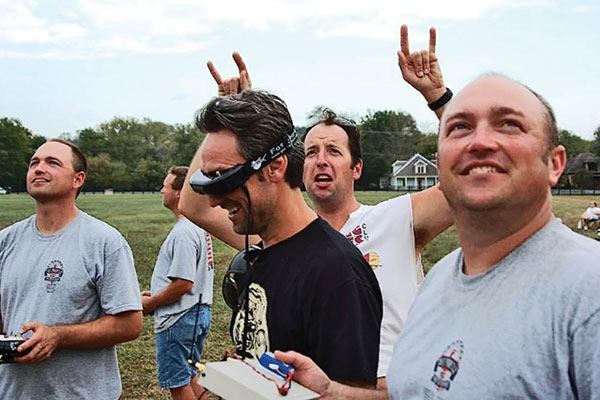How to Use the AMA Flying Site Assistance Program

Written by Jim T. Graham Born to Fly Column As seen in the July 2017 issue of Model Aviation.
As someone who works in the RC industry, I’m privileged to be able to visit flying sites across the country. Although the drone craze has overtaken the hobby in the last few years, I feel 100% certain that winged flight will not only return, but surge back into the spotlight. With a quadcopter you don’t need a good runway, but RC airplanes do. This is where the AMA’s Flying Site Assistance Program comes into play. For longtime pilots who are reading this, we all know how important a good field is for our hobby. New pilots usually start out with park flyers and then advance to bigger airplanes. They soon realize that they need a place to fly.
How to Get a Flying Site
This is harder than you can imagine. The trick is to find a property that is suitable for flying. That means wide-open spaces—not only where you are flying, but also in outlying areas. I have flown at fields that are surrounded by trees. They eat airplanes and then you can’t find or retrieve them. Let’s say that you find the perfect spot. Your next worry is neighbors. How close are they? Will you only fly electric-powered aircraft to keep the noise down? Will the area develop and ultimately push you off your field? These are all things that can happen and are happening right now. Then there is the local government. My local field is in a city park. We had to prove that we had enough current and future pilots to use the area. You need to show that there is a need and there are benefits to having an RC field. You must sell government officials and the community on the concept. This is where the power of AMA comes in. You can show that you are backed by a large organization.
If you have neighbors near your flying field, be sure to make friends with them. If you are lucky, they might even be the host of your favorite TV show! Here is the author with Mike Wolfe from the show American Pickers.
You need to have insurance. I can tell you from personal experience that being able to say to a landowner, “My pilots are all insured,” has saved us from losing a field. You not only need to look like you have your ducks in a row—those ducks need to actually be lined up. That is the power of the AMA.
How to Keep Your Field
You have a runway, you have a fieldhouse, and you have a parking lot. If you are lucky, you have electricity and bathrooms. The next trick is keeping your field. You could run into issues with local farmers, land developments, and more. The AMA has a booklet all about this called Getting and Keeping Flying Sites. There is even a video about the topic that you can check out. Learn from others and utilize what the AMA has to offer. The price of not doing it could be the loss of your airfield. I spoke with AMA Flying Site Assistance Coordinator Tony Stillman and asked him what his top suggestions were for pilots who need guidance. Tony Stillman: Not everything is on the AMA website and every situation is unique. You can always contact me if you need help. For clubs that are trying to keep a site, there are several components that you can present. We have presentations that clubs have put together. I can send you copies of those. Think about what your club does or what you want the club to do. You want to present four or five main components. You should explain that you are a part of the AMA and have the insurance that goes along with it. One thing a club can do is provide security for a piece of property. If it’s fairly remote, you could relate the fact that you and your club members will be out there on a daily basis. It is an asset to the site owner if you can watch out for his or her property. Another component is that you can become the answer to a city’s drone problem. City officials know they can’t get rid of them, but your club field could be where the city can direct multirotor pilots to go fly. It’s like the skateboard issues that many cities had until they created skate parks. Your club could be a good solution to that problem. This city/county relationship becomes an asset and makes your club/flying site important and valuable to your community. You need to be a group that is open to growing. You need to connect with young pilots to keep the hobby alive. A kid who has a drone might see you flying your RC airplane and want to graduate to that. We had drone races at AMA’s International Aeromodeling Center last year, and most of the multirotor pilots were watching our [RC] Scale event that was going on. Your field could be the connection that takes a commercial drone pilot and turns him or her into a lifelong RC pilot. It all cross-pollenates. You also want to bring up the concept that your events can bring money into a community. You are adding value to a city or park. If you are threatened down the road, that value could come to your rescue.
One way to get the locals to support your field is to get them interested in flying. Here, Mike Wolfe is in goggles for his first FPV flight. He was all smiles!
Jim Graham: I have had a personal experience just like this. The county wanted to stop our yearly Pro Bro event in Leiper’s Fork, Tennessee. We have been having this event for roughly 12 years. I had to go to a county government meeting to defend our ability to fly in the field that we have been in for years. What surprised me was that the local business people showed up to the meeting to support us and the event. The reason was that our group was friendly to the small town there and we spend a lot of money there each year. I think it was the support of the locals that allowed us to keep our field. A new development this year is that Justin Timberlake bought the property adjoining our field. Now I have to figure out how to make sure he is okay with our annual weeklong event. Mike Wolfe, from American Pickers, also lives nearby. When he came down to see what was going on during a past event, we put him in goggles and he had his first FPV experience. Now he comes down each year to say hello to all of the pilots! Tony Stillman: It’s important to connect with the surrounding landowners and the local community by working with school kids and adding value to the community, making sure the local farmer knows you support him or her, and continually communicating and showing your worth to the town and the site owner. All of these things can help solidify your flying field in a community. If you are an AMA member, the Flying Site Assistance Program is here for you and Tony is standing by to help. Utilize the AMA to help keep your field for future pilots. -Jim T. Graham [email protected]










Add new comment